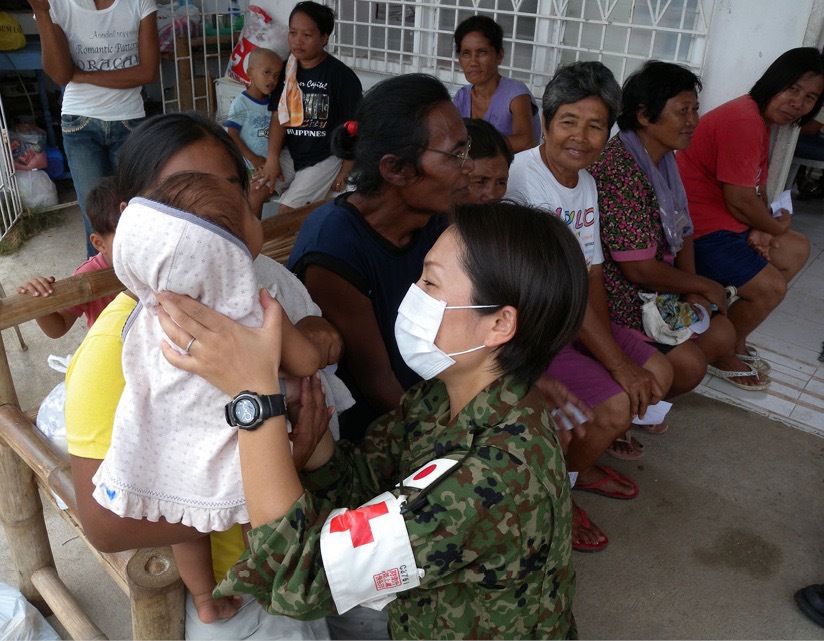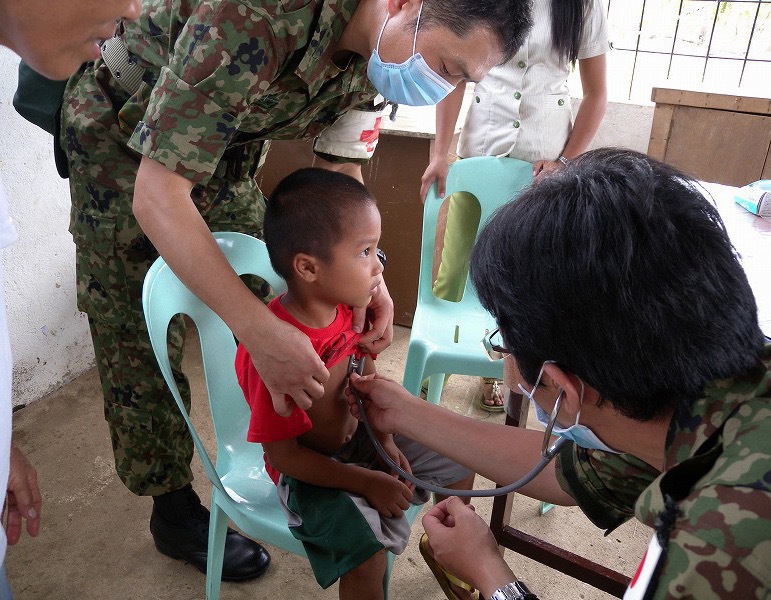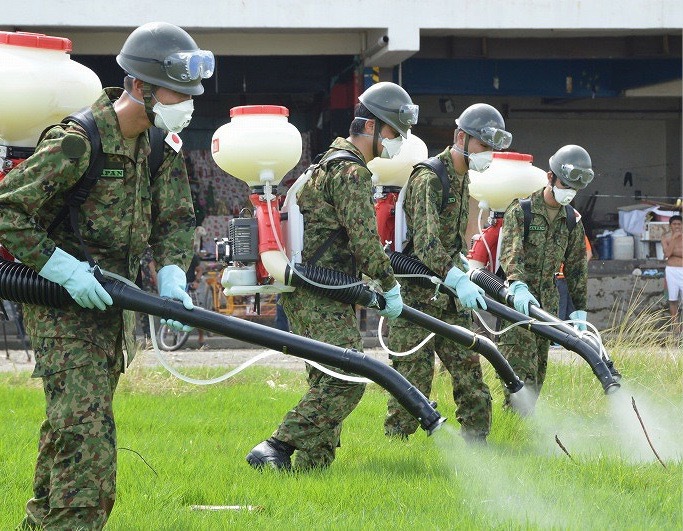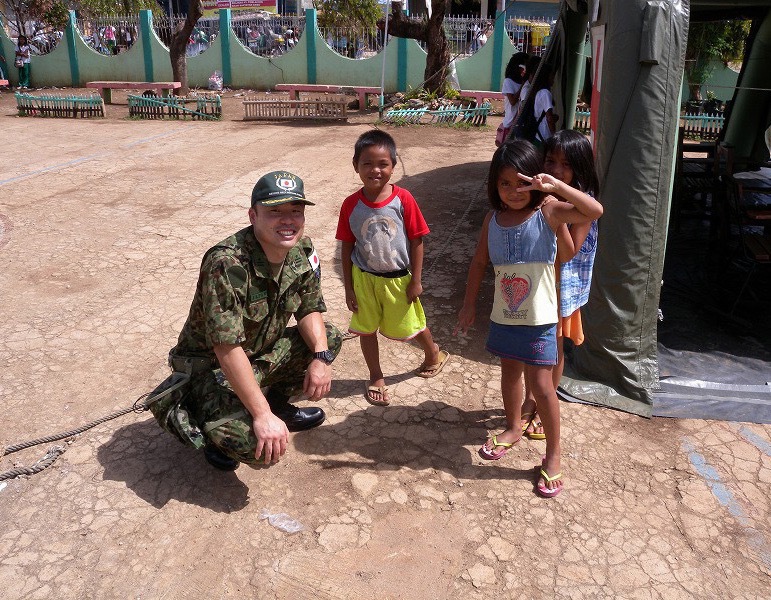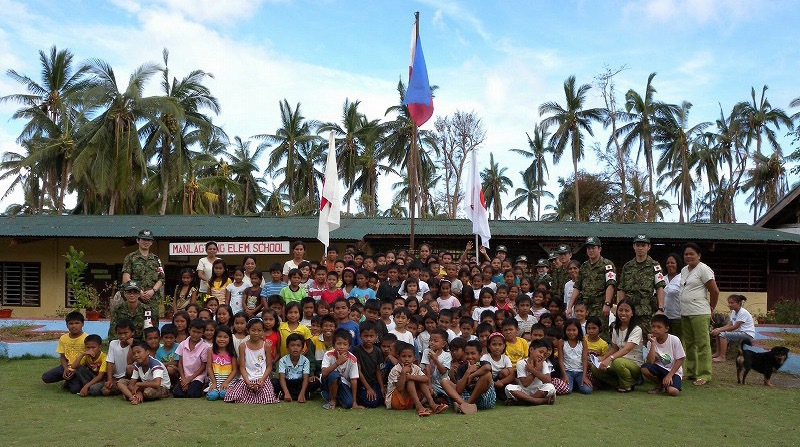From November 8 to 9, 2013, large-scale typhoon No. 30 directly hit the center of the Philippines. Following a request from the Philippine government, whose country suffered catastrophic damage, the Japanese government decided to conduct international disaster relief operations on November 12.
On that day, Japan’s Self-Defense Forces (SDF) formed an international disaster relief team consisting of fifty people, including medical teams, and dispatched them to the Philippines one after another. After their arrival, the medical teams provided medical treatment in Tacloban and Cebu. In view of further requests sent by the government of the Philippines and the situation on the ground, Japan decided to expand their operations on November 15. Following this decision, the largest task force ever was formulated. An organization called the Joint Operations Coordination Center was also established in the capital city of Manila. This Center, consisting of 1,100 personnel, closely coordinated with the Embassy of Japan and Japan International Cooperation Agency (JICA) in the Philippines. It also coordinated with relevant Philippine organizations and other countries, such as Australia, the United Kingdom, and the United States, via the multinational coordination center set up in Manila.
The joint task force, named the “Philippines International Disaster Relief Team,” conducted integrated operations on land, sea and in the air: 2,646 people received medical care; 11,924 people were vaccinated; epidemic control operations were conducted over approximately 95,600 square meters; approximately 630 tons of supplies were transported by air; and approximately 2,768 people were airlifted. Specifically, the SDF provided support that met regional needs by working closely with the local government and others. For example, Japan cooperated in a vaccination campaign following a local request and participated in epidemic control operations in Tacloban and neighboring areas.
Based on consultation with the Philippine government, the Japanese Minister of Defense terminated disaster relief operations on December 13, 2013, wrapping up a month of activities. President of the Philippines Benigno Aquino III, the mayor of Daanbantayan (in northern Cebu), and other local authorities expressed their appreciation for Japan’s support and the SDF activities. Local residents invited SDF representatives to ceremonies to thank them for medical assistance. Additionally in subsequent days, the government of the Philippines sent thank-you letters to each SDF member who worked on the international disaster relief operation.
The SDF will continue to work with other relevant organizations to actively promote international cooperation in relief operations in the wake of the major natural disasters and similar crises outside Japan. It will also contribute to the well-being of the international community, and fulfill Japan’s obligations to the community of nations.
Tomodachi Menu
- Top
- Previous Issues
- Topic
- Country/Region
Close

- Top
- Previous Issues
- Topic
- Country/Region
-
- Asia
-
- Pacific
-
- North America
-
- Latin America and the Caribbean
-
- Europe
-
- Middle East
-
- Africa
-
- Other Area
-
-
Tomodachi Disaster Prevention Edition 2015






























































































































